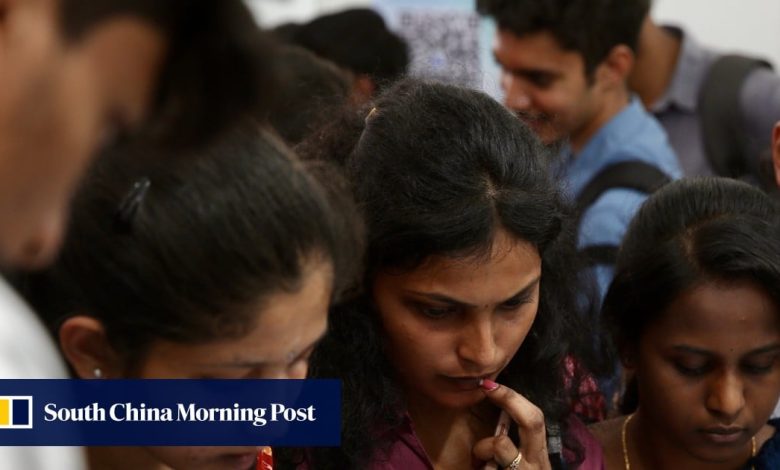India’s measures to tackle youth unemployment crisis dismissed as inadequate

“I have been jobless for over two years now … I have tried every little opportunity but couldn’t get any steady job so far,” Mankar said in a trembling voice.
Mankar is one of tens of millions of young Indians who have been struggling to find work amid a severe unemployment crisis. Analysts warn that the Indian government’s attempts to address the crisis are inadequate.
In February, over 4.7 million applicants competed for 60,000 job vacancies to join the police of Uttar Pradesh state. Other Indian states have reported a similar job application rush in recent years.

During the annual budget announcement on Tuesday, the government unveiled a special US$24 billion package to boost job creation and the skills of workers. The measures are on top of other similar schemes aimed at slowing unemployment over the next five years.
The opposition has said the government’s proposals did not go nearly far enough to tackle the problem.
India’s unemployment rate was 3.2 per cent in the 2022-2023 financial year, according to official data. The youth unemployment rate dropped to 10 per cent over the period from 17.8 per cent in the 2017-2018 financial year. Many economists have doubts about the government’s figures.
The independent Centre for Monitoring Indian Economy think tank has estimated the unemployment rate was 9.2 per cent last month.
“Unemployment is the biggest challenge facing the country,” said P. Chidambaram, former finance minister and opposition leader from the Indian National Congress party.
“The response of the government towards employment is too little and will have only little impact on the grave unemployment situation across the country,” he said during a post-budget press conference.

A dearth of jobs, particularly in India’s hinterlands, is cited by analysts as one of the key factors behind Prime Minister Narendra Modi’s underwhelming electoral performance in the country’s recent general elections, which saw his Bharatiya Janata Party failing to secure a parliamentary majority.
Analysts are worried that an apathetic government that fails to introduce robust measures to reduce unemployment could lead to the crisis worsening.
Ravi Srivastava, director of the Centre of Employment Studies at the New Delhi-based Institute of Human Development, said there were several key aspects of India’s unemployment crisis.
These were extensive underemployment including among women, the poor living conditions of workers and high unemployment of Indian youth, particularly those who had attained advanced education, Srivastava told This Week in Asia.
“The problem of educated youth unemployment, in particular, is a potentially explosive issue, given the volatile nature of young people,” he added.
Over 40 per cent of India’s population of 1.4 billion are less than 25 years old, with millions of young workers entering the job market every year. While the country’s economy is expected to register healthy growth of 7.2 per cent this year, job creation remains a major challenge for the Modi administration.
A key reason for India’s low job creation is that a significant portion of the government’s resources are placed in capital-focused areas rather than labour-intensive sectors, economists say.
Serious questions have been raised over the validity of official employment data, such as the claim that India generated nearly 47 million jobs between April 2023 and March 2024. If the provisional data is accurate, it would represent the highest annual job creation in four decades.

Arun Kumar, a former economics professor at Jawaharlal Nehru University (JNU), said Delhi’s method of determining unemployment was problematic.
“The official definition of the ILO [International Labour Organisation] is, if you’re not earning in the market, you’re unemployed. The government of India says anybody who is working is employed even if you’re not earning,” said Kumar.
There are over 580 million estimated workers in the country and more than 80 per cent of them are engaged in the informal sector, according to official data.
“The government policies are all wrong. The unorganised sector is where all the unemployment is,” said Kumar. The government was focused on boosting the organised sector rather than addressing the beleaguered informal sector, he added.
Praveen Jha, an economics professor at JNU, said the current and previous governments have failed to deal with long-standing issues in the Indian job market.
He said: “This is a long-term structural crisis of unemployment … We’ve been using the term ‘jobless growth’ since the 1980s. We even had job-loss growth. The crisis is much deeper. The data has been abused by those in power.”





